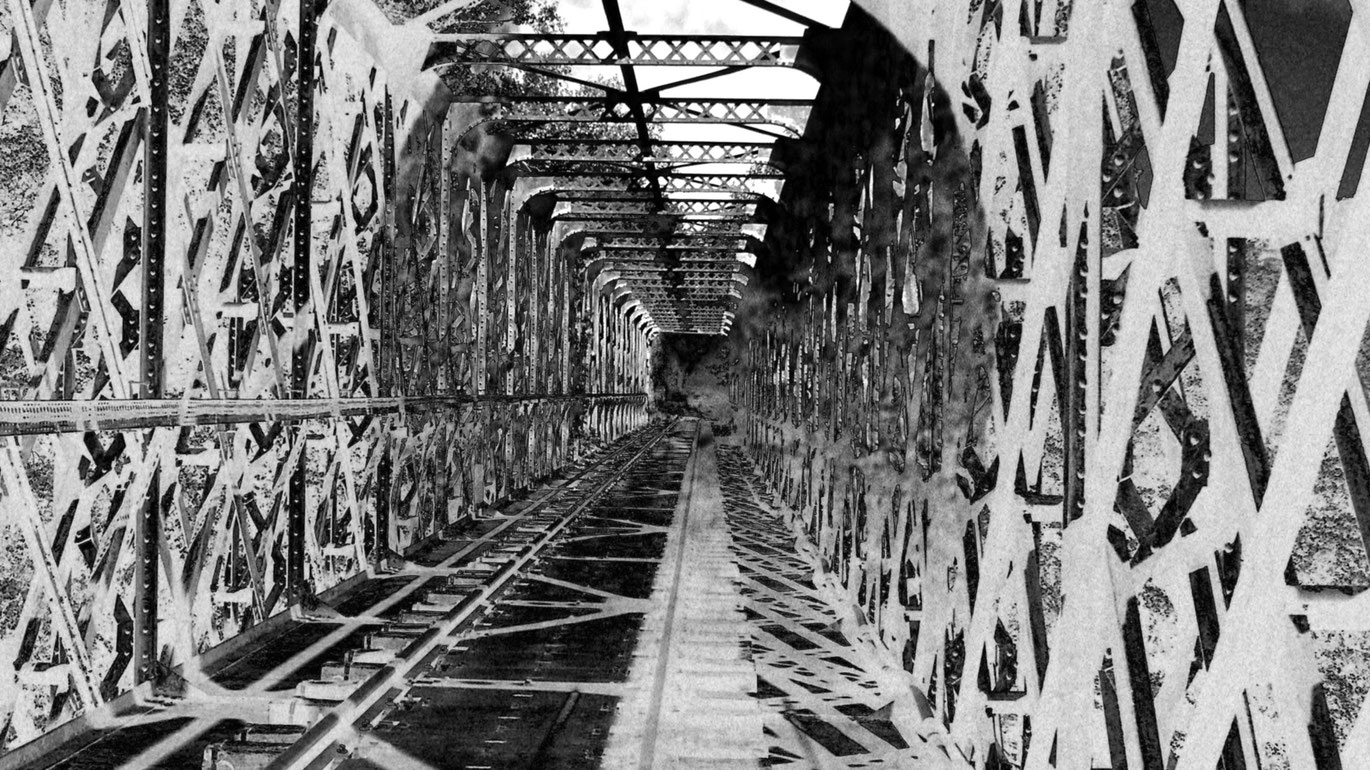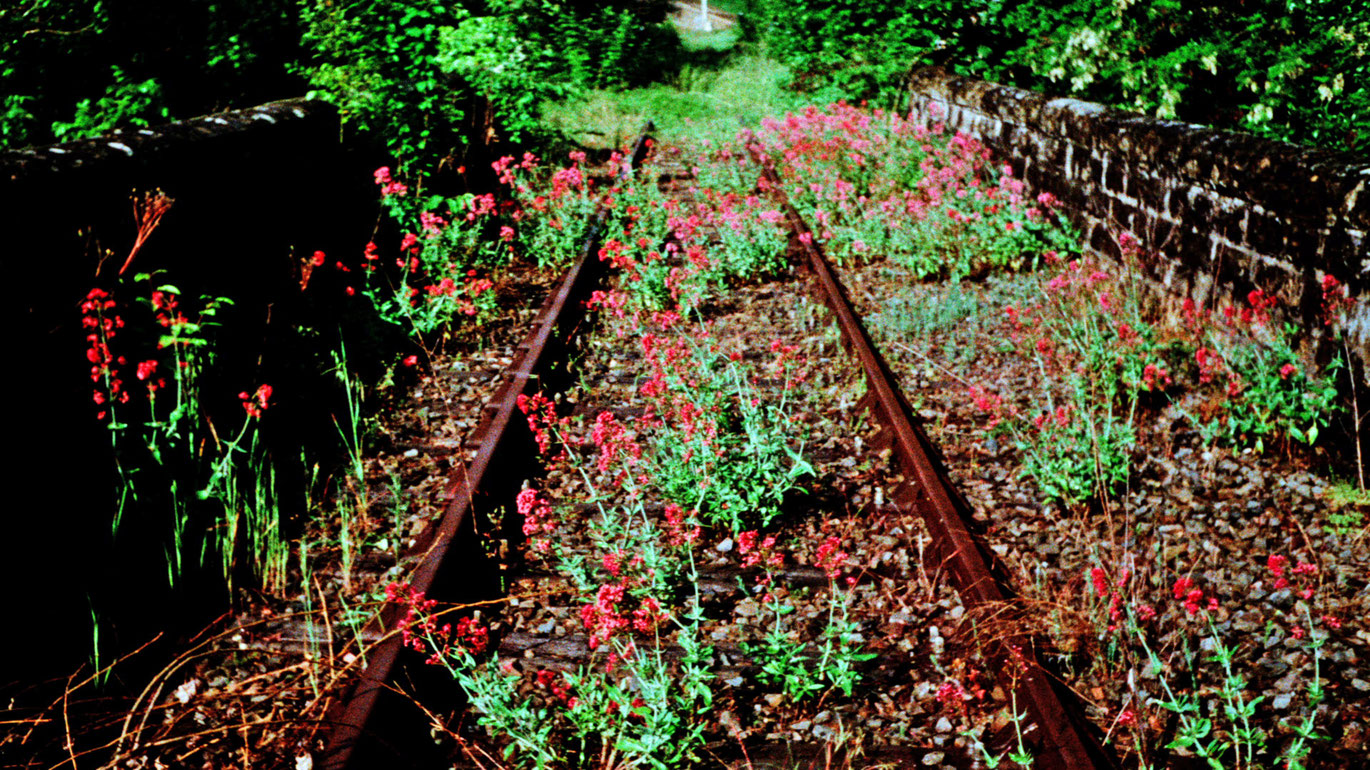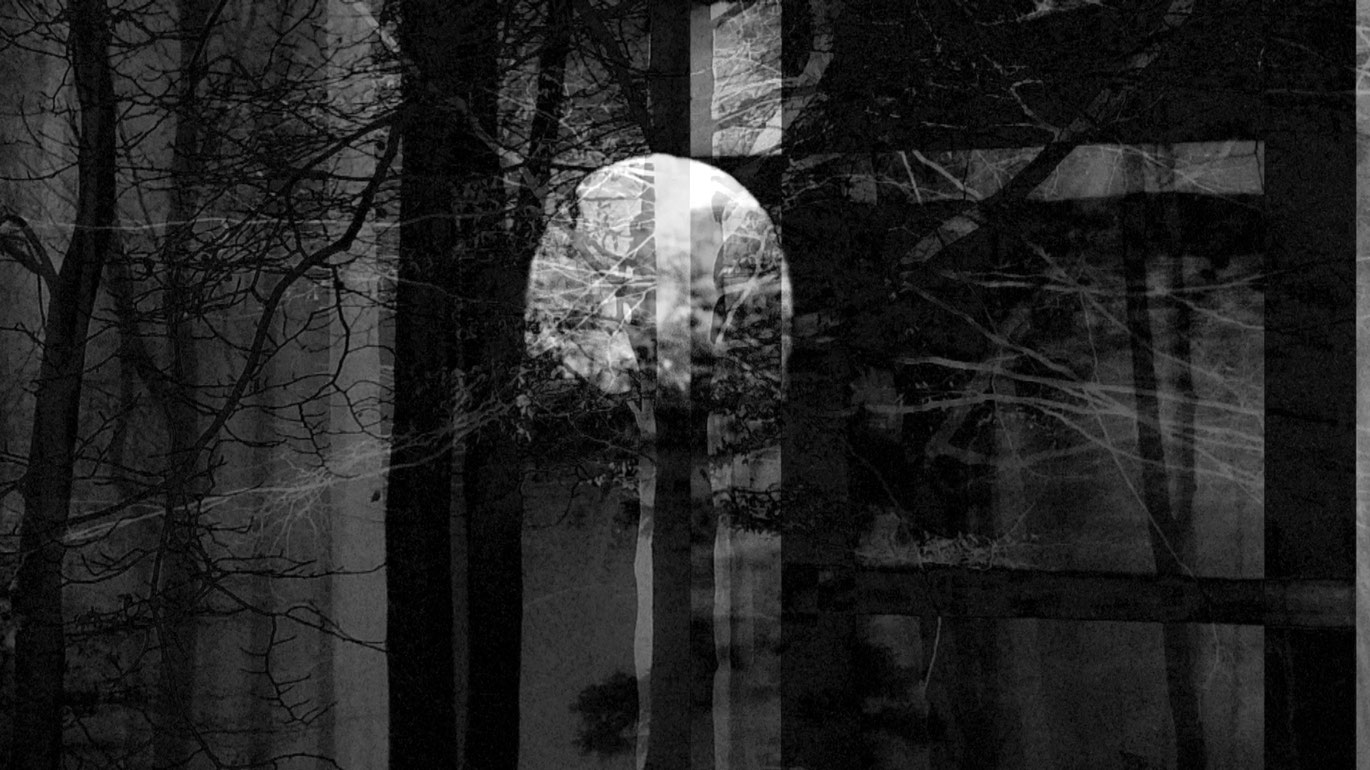Phantom Ride Phantom
From a "simple" camera pan through a journey into a ghostly realm, to a veritable trip: Phantom Ride Phantom carries out these three steps with cinematographic verve and great technical finesse. At the same time, the starting point for this phantom of a cinematic ghost ride is a single freeze frame, taken with a half-frame camera on an abandoned train track near Toulouse. The row of tracks, overgrown in gaudy red and green, arranged along a central perspective and at first, pulsating gently on its own, shapes the matrix of a continuously disruptive split image. Shots taken from a train window are fed into the dynamically pulsating flow—a snowy landscape passing by in changing directions, divided throughout by a striking split in the middle. A true spectral image–counter-image staccato unfolds around this central divide, in homage to a Ken Jacobs "phantom ride" film. Left to right, freeze frame and moving image, driving direction and opposite direction, added to that, opposing motifs (train versus forested nature) — Phantom Ride Phantom arranges all of these contrasts in a frenetic flux around the fissure made visible here, which the cinematic perspective continually splits open within itself. At the same time, this empty middle is cross-faded in second-by-second succession, once by a tree, then one of the tracks, and finally, a seductive light at the end of a tunnel intervening ever more psychedelically into the film. An underworld of images, which refuses to come to rest; perception begins to establish itself until, following a final, metallic eruption and short flickering phase, the original image (shaking) becomes visible. Phantom Ride Phantom thus traverses more than 100 years of avant-garde history in compressed form, and insinuates that the journey is, by no means, over. (Christian Höller)
Translation: Eve Heller
Phantom Ride Phantom
2017
Austria
10 min



